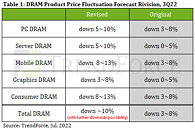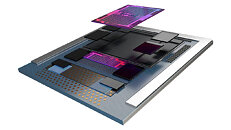Projected YoY Growth Rate of Server Shipments for 2023 Has Been Revised Down to 2.8% as Inventory Adjustments Continue
Based on the latest data and research, TrendForce has further corrected down the projected YoY growth rate of whole server shipments for 2023 to 2.8%. Three factors are behind this revision. First, lead time has started to return to its usual length for most orders related to server components from 3Q23 onward. Seeing this, server OEMs and cloud service providers (CSPs) have also begun to correct the component mismatch issue by lowering demand for items that are in excess while maintaining a constant inventory level for items that are still in tight supply. This development, in turn, has reduced the flow of server orders going to ODMs. Second, the wave of demand that was generated earlier from the effects of the COVID-19 pandemic is dissipating. Hence, expansion activities have cooled off noticeably for services such as video streaming, e-commerce, etc. Among CSPs, Meta, Google, and ByteDance (TikTok) have lowered their server procurement quantities for next year. Lastly, the global economic outlook has remained fairly negative, so companies across most industry sectors have formulated a more conservative expenditure plan and scaled back IT-related spending for next year.




















































